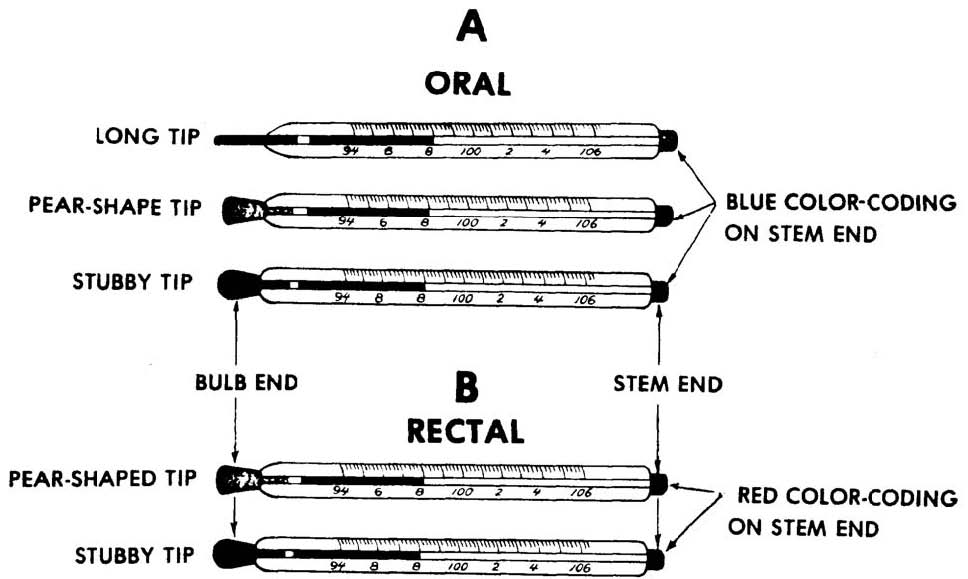 This is the Archived Desktop Edition.
This is the Archived Desktop Edition.
You should be transferred to the Newest Edition for Desktop and Mobile within 2 seconds.
Lesson 2: Temperature
Section III: Taking Temperatures
2-15
2-15. WHAT IS THE DIFFERENCE BETWEEN AN ORAL THERMOMETER AND A
RECTAL THERMOMETER?
a. Glass Oral Thermometers.
(1) The bulb of an oral thermometer is either long tipped, pear-shaped, or stubby (figure 2-5 A ). A long and slender bulb exposes as much surface area of the mercury as possible. Having more surface area exposed helps obtain an accurate temperature quickly.
Figure 2-5. Oral and rectal glass thermometers.
(2) The other (stem) end of the oral thermometer is colored blue. Color-coding thermometers lets you tell an oral thermometer from a rectal thermometer quickly.
b. Glass Rectal Thermometers.
(1) The bulb of a rectal thermometer is short and thick in order to protect the rectum
(figure 2-5 B ). A long, slender bulb tip could accidentally injure the patient by penetrating the walls of the rectum. A blunt tipped thermometer is much less likely to damage the rectum. Remember, a thermometer with a long and slender bulb is definitely an oral thermometer while a thermometer with a short and thick bulb could be either an oral thermometer or a rectal thermometer.
(2) The stem end of a rectal thermometer is color-coded red. (Remember, the two R's--red and rectal--go together.)
c. Electric Thermometer Probes. Electric thermometers come with two different sensing devices (probes). One probe is designated as an oral probe while the other is designated as a rectal probe. The oral probe is color-coded blue while the rectal probe is color coded red. The oral probe and the rectal probe have the same shape and size. The color-coding is simply to prevent a probe from being used to take a temperature rectally one time and a temperature orally the next.

